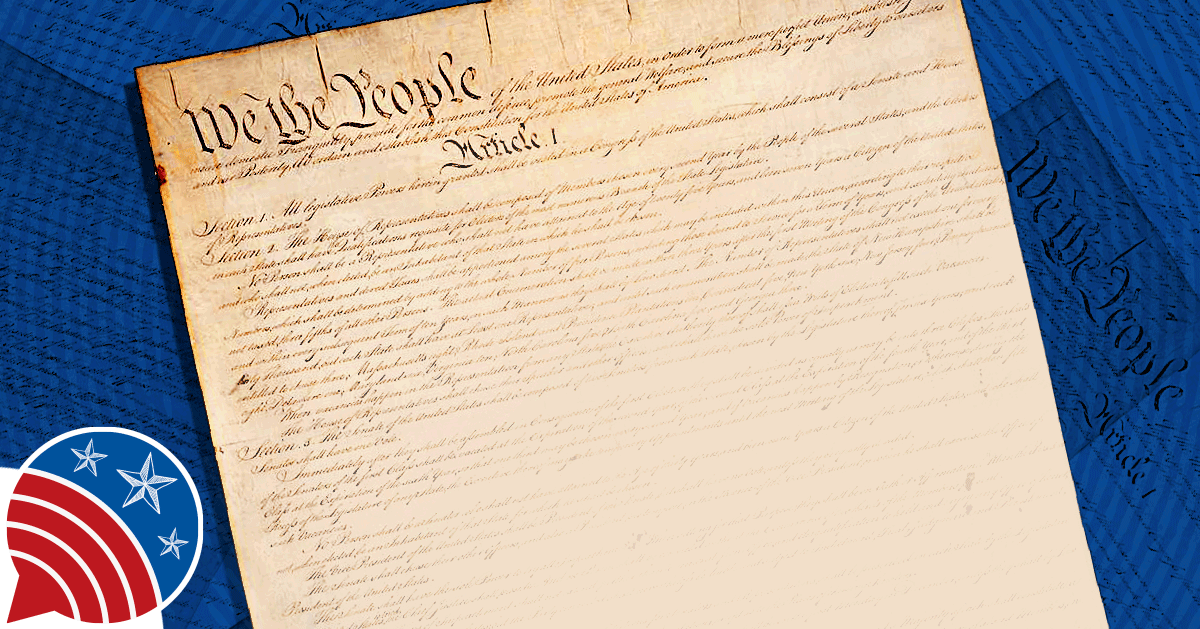
Principles of the Constitution
Take a quick trip back to the founding era to learn about the roots of representative government, limited government, separation of powers, and the many compromises that led to our Constitution. What is the distinction between a republic and a democracy? This exploration lays the groundwork for rich dialogues on government power, the ongoing tension between state and national power, and American democratic values in action, both now and over time.
Podcasts & Videos
Major Issues of the Philadelphia Convention, Representative Government: Principles of the Constitution, Part 3
Instructions
- Watch and listen to the 60-Second Civics video below. If you'd like, you can also read along using the script that appears below the quiz. Or you can turn on the video's subtitles and read while watching the video.
- Take the Daily Civics Quiz. If you get the question wrong, watch the video again or read the script and try again.
Episode Description
Dr. Donna Phillips: Welcome to 60-Second Civics, the daily podcast of the Center for Civic Education. I'm Donna Phillips. Today we continue our series on principles of the Constitution as part of our Civil Discourse: An American Legacy Project. We are joined by special guest Dr. Lester Brooks, American history professor emeritus from Anne Arundel Community College. Welcome, Dr. Brooks.
Dr. Lester Brooks: Thank you for having me.
Dr. Donna Phillips: Absolutely. We're going to continue with the question of what the major issues of the Philadelphia Convention were and why were they major issues.
Dr. Lester Brooks: Another crucial issue that was discussed was representation. How would the states be represented? There were large states and there were small states. And so they had to decide who would be represented and how they would be represented. A second issue or another issue would be selecting the executive. How do you select the executive? Is it by vote of the people?
Ultimately, they came up with the Electoral College, and still another major issue was slavery. What to do about the enslaved. And they will try and resolve to some degree. That will be an issue that will continue to they'll continue to wrestle with.
Dr. Donna Phillips: Thank you so much for joining us, Dr. Brooks. That's all for today's podcast. 60-Second Civics, where civic education only takes a minute.
Dr. Lester Brooks: Thank you for having me.
Dr. Donna Phillips: Absolutely. We're going to continue with the question of what the major issues of the Philadelphia Convention were and why were they major issues.
Dr. Lester Brooks: Another crucial issue that was discussed was representation. How would the states be represented? There were large states and there were small states. And so they had to decide who would be represented and how they would be represented. A second issue or another issue would be selecting the executive. How do you select the executive? Is it by vote of the people?
Ultimately, they came up with the Electoral College, and still another major issue was slavery. What to do about the enslaved. And they will try and resolve to some degree. That will be an issue that will continue to they'll continue to wrestle with.
Dr. Donna Phillips: Thank you so much for joining us, Dr. Brooks. That's all for today's podcast. 60-Second Civics, where civic education only takes a minute.






